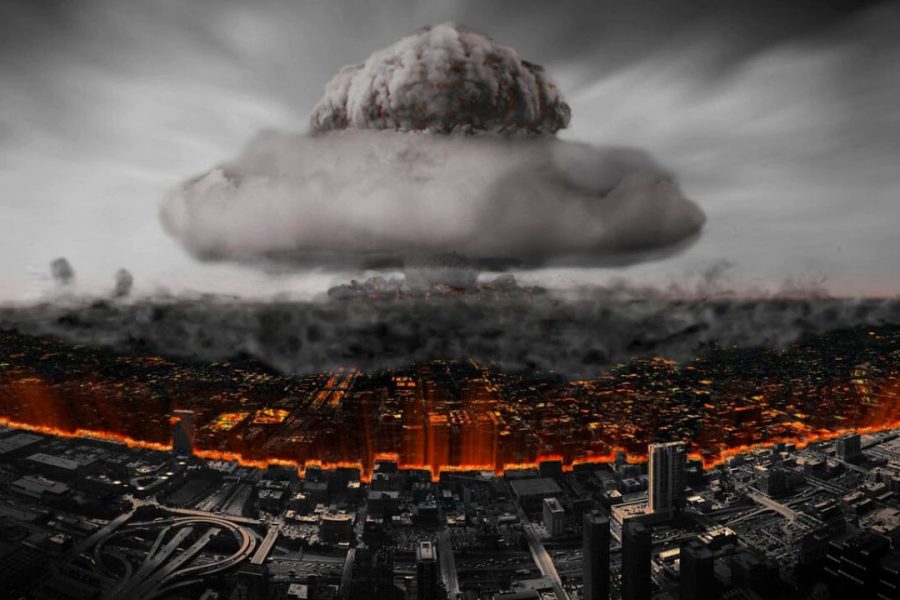We tend to focus only on the dark and terrible parts of history, but it’s not all bad. Amidst all the wars, diseases, and other tragedies of history, there have been many periods of unprecedented peace and prosperity. Historians sometimes call them “golden ages,” when cultures around the world reached new heights in science, medicine, literature, economics, philosophy, and a host of other fields.
10. 14-16th century, Mali

Timbuktu was founded as a seasonal trading camp on the southern edge of the Sahara Desert sometime in the 12th century, providing West African kingdoms with an opportunity to trade with salt-rich kingdoms to the east and beyond. Back to top 1300s , when it was annexed by the Kingdom of Mali, Timbuktu had already become the most important trading center in West Africa. According to legend, the city was so rich in gold that when Emperor Mansa Musa donated a heap of gold to Egypt in 1324, the price of the precious metal fell by 12% across the country. years !
It wasn’t just wealth – during the reign of Mansa Musa, which began in 1312, Mali was also one of the most important centres of culture and learning in the African Islamic world. Scholars, architects, doctors and other specialists were invited from all over the known world – at its peak, the city could accommodate more than 25 000 students, and its archives contained more than 800,000 manuscripts. This period lasted until about the end of the 16th century, when Timbuktu was occupied by Moroccan troops.
9. New Kingdom, Ancient Egypt

The New Kingdom of Egypt was a period between 16th and 11th centuries BC. This nearly 500-year era is remembered as the most prosperous time in the history of Ancient Egypt, when the pharaohs, belonging By the 18th, 19th and 20th dynasties, they had transformed the Egyptian kingdom into the most advanced civilization of the ancient world.
This growth was driven by several factors. While the fertile Nile Delta provided a rich source of food and other natural resources, the gold mines of the Nubian Desert made the pharaohs incredibly wealthy. This trickled down to the rest of Egyptian society in the form of extensive architectural projects such as temples and tombs, as Egyptian architecture became more sophisticated and complex than ever before. This was also when Egypt reached the peak of its territorial expansion, through both conquest and diplomacy, as is now known pharaohs , such as Tutankhamun, Ramses II and Hatshepsut.
8. Tang Dynasty, China

The Chinese Tang Dynasty replaced Sui Dynasty in the early 7th century. Under his rule, China reached the height of its territorial and cultural influence in the region, lasting for more than three centuries until its fall in 907 AD. It was one of the greatest civilizations of its time, widely known for its ethnically diverse and cosmopolitan urban settlements. During the seventh and eighth centuries, many Chinese cities grew into large, bustling metropolises—the capital Chang'an was the most populous city in the world at its peak, with a population of over a million residents .
The Tang Dynasty saw many far-reaching advances in the arts, literature, architecture, urban planning, and more. It was during this time that woodblock printing was first invented in China, giving scholars and thinkers a new way to produce and disseminate knowledge. This period is particularly notable for its contributions to ancient Chinese poetry, especially during the reign of Emperor Xuanzong , who established a separate institution dedicated to poetry called the Academy letters .
7. Pax Romana, Ancient Rome

Pax Romana - or " Roman world " — was a period of relative calm in the Roman world. Beginning with the reign of Augustus Caesar in 27 BC and ending with the death of Marcus Aurelius in 180 BC, these two centuries saw the relatively small Roman Republic grow into one of the largest empires in history. Despite the turbulent early years of Augustus' reign, Rome prospered enormously during this time, ushering in an era of peace and prosperity for many of its citizens, especially in the capital.
At this time, the empire reached its territorial peak with a population of over 70 million people. Roman scientists made new advances in various fields, especially in architecture and urban infrastructure. A complex network of roads and aqueducts was built across the territory, further facilitating trade between distant provinces.
While it is arguable that it was a good time for all involved – as the empire was still experiencing numerous conflicts in its border regions throughout this time – the Pax Romana was generally a peaceful era for most citizens. It came to an abrupt end with the death of the emperor Marcus Aurelius, followed by the disastrous board his son Commodus.
6. Gupta Empire, India

The Gupta Empire was a Hindu empire founded in 320 CE, after nearly five centuries of chaos and warfare between smaller kingdoms and principalities across India. The first Gupta ruler, Chandragupta I , expanded it into a formidable geopolitical entity stretching across vast areas of northern, eastern and central India.
From its foundation to its collapse in the 6th century, the Gupta period remained the high point in the history of Indian civilization. It was during this period that the modern decimal system of numeration—now known as Arabic numerals — along with other fundamental discoveries by thinkers such as Aryabhata and Sushruta. Indian architecture also reached new heights during this time, as the Gupta rulers, especially Chandragupta II , built massive palaces and temples throughout the empire.
5. After World War II, USA

When World War II ended in 1945, America found itself in a uniquely profitable situation. While pre-war powers like Britain and France lay in ruins and most of their populations had perished, the U.S. economy was about to experience some of its most productive years.
Also sometimes known as the Golden Age of Capitalism, it was a period of rapid growth and reindustrialization across the country, particularly in the western and southwestern states. Cities such as Los Angeles, Houston, Albuquerque, Phoenix, and others expanded rapidly as more and more Americans moved from densely populated urban areas to the suburbs due to higher wages and living standards. Massive infrastructure projects such as Highways Act 1956 , under which about 40,000 miles of roads and highways were built, connecting different parts of the country. During this period gross national product grew from $200 billion in 1940 to $500 billion in 1960 as the American worker shifted to high-skilled service jobs.
4. The Golden Age of Islam

The Golden Age of Islam began in the 8th century with the founding of the Abbasid Caliphate. Centered in the capital Baghdad, Islamic scholars were financed and supported by the caliph And other members of the royal family, made many fundamental discoveries in science, technology, medicine, theology, military affairs and other fields. Building on the knowledge of ancient cultures such as India, China and Greece, many of these discoveries laid the foundation for the scientific revolution in Europe.
Unfortunately, all this came to an abrupt end in 1258 , when Baghdad was captured and brutally sacked by Mongol forces in 1258, with most of its population put to the sword. This included the House of Wisdom or Great Library of Baghdad, where hundreds of thousands of manuscripts were burned or thrown into the river .
3. V century, Athens

The Golden Age of Athens lasted for most of the 5th century BC, particularly during the reign of Pericles from about 461 to 429 BC. At the time, Athens was just one of many city-states in Greece, ruling over a league of more than a dozen other states called the Delian Empire. league In essence, it acted more like an Athenian empire than a union, making the city richer and more powerful than ever before.
During this time, the Athenians made so many advances in areas such as philosophy, science, logic, mathematics, theater, and art that it is often called the foundation of Western Democracies In mathematics, Athenian thinkers such as Euclid and Pythagoras formulated the first laws of modern Geometry Playwrights such as Sophocles and Euripides lived in Athens around this time, along with physicians such as Hippocrates, philosophers such as Plato and Socrates, and historians such as Herodotus and Thucydides.
2. Timurid Renaissance

The Timurid dynasty was founded by Timur, a Turko-Mongol military leader , who conquered and created a vast empire in Central Asia and Persia in the 14th century. This was the golden age of Persian culture—from the late 14th century to about the early 16th century, the Timurid Empire made unforeseen advances in astronomy, architecture, poetry, the performing arts, metalworking, military science, and other fields.
This period, now known as Timurid Renaissance , is particularly famous for developing the technique known as Persian miniature painting, an abstract style of colorful arts , practiced in the cities of Iran and Central Asia. Calligraphy developed as a distinct art form throughout this period, with artists from around the world flocking to the rapidly developing cities to practice their craft. Many members of the dynasty were themselves artists , because they financed and encouraged large-scale architectural and art projects throughout the empire.
1. Italian Renaissance

The Italian Renaissance began in the early 15th century. Centered in the Republic of Florence—then one of many separately governed city-states on the Italian peninsula—the period soon became known as the zenith of European arts and sciences, sparking other revivals in countries such as Britain, Spain, France, Germany, and elsewhere.
By the end of the 14th century, Florence was an important center banking and other commercial activities in Europe. As influx wealth The harsh, toil-based lifestyle of the Middle Ages gave way to a more individualistic and free approach to life, also known as "humanism." Wealthy Florentine citizens were now more willing to invest time and money in art and culture, which had a profound effect on Florentine society.
This shift in the popular worldview - combined with advances in technology - produced many outstanding artists, thinkers, writers, scientists and engineers throughout Florence, including such names as Filippo Brunelleschi, Leonardo da Vinci, Galileo Galilei, Michelangelo, Machiavelli and others.














Оставить Комментарий